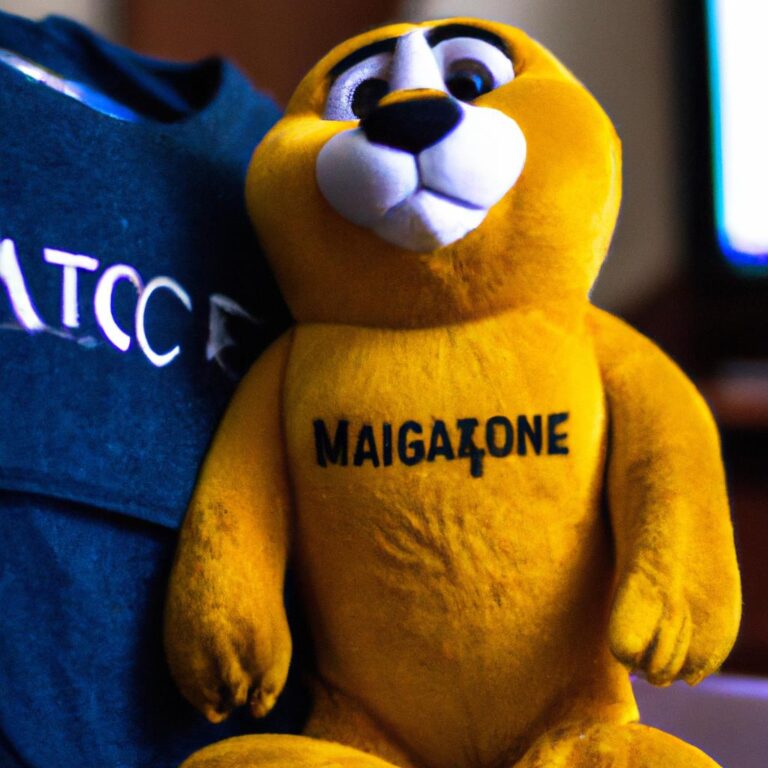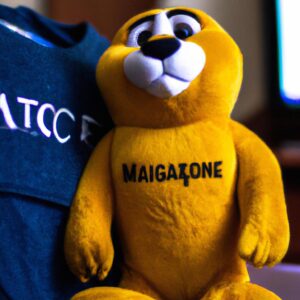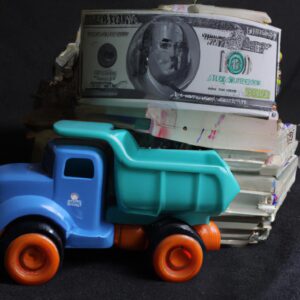From Movies to Merchandise: Exploring Toy Licensing and Merchandising
Creating toys and other merchandise based on movies has become an incredibly popular way for producers to increase their profits. Through toy and merchandise licensing, producers can generate more revenue from existing movie properties. In this guide, we’ll explore how toy and merchandise licensing works, the key players involved, and the impact that these items can have on movies. We’ll also go in-depth into the potential financial benefits of toy and merchandise licensing, as well as the challenges faced by producers. Finally, we’ll suggest some best practices for creating and managing toys and merchandise lines.
This guide will introduce and discuss the concept of toy licensing and merchandise, with a specific focus on movies. To provide a clear example of how this process works, we will look at a successful movie that had a successful toy and merchandise licensing business.
The process of turning movies into merchandise can be a complex one, but it is essential for achieving maximum sales and revenue for the movie. Toy and merchandise licensing involves not only the production of the toys and merchandise based on the movie, but also the legal and contractual arrangements that need to be made between the original copyright holders and the company that will produce the merchandise.
In order to make the most out of the licensing process, it is important to understand who the key players are. These typically include the film studio, production company, merchandise company, and the toy company that will create and distribute the products. All of these parties need to come together and agree on a contract that outlines the terms and conditions of the agreement.
The success or failure of a movie’s merchandise line can have a large impact on its overall success. If the product is high quality and attractive, the movie may become more financially successful due to higher sales. On the other hand, a lack of quality products or a lack of interest in the products may lead to poorer sales and ultimately lead to a lower return on investment for the film studio.
The potential benefits of toy and merchandise licensing are clear: increased sales and revenues, and the chance to reach new audiences with the products that are based on the movie. However, there are also some potential challenges that companies may face. It can be difficult to get the right balance between quality and cost effectiveness, as well as ensuring the products are compliant with safety standards. In addition, the intellectual property rights associated with the merchandise must be respected in order to avoid any legal issues.
By following some key best practices when it comes to toy and merchandise licensing, it is possible to maximize the success of the products. This includes working closely with the appropriate teams from the film studio and other key players, ensuring the products represent the spirit of the movie, and putting effective marketing strategies in place.
In conclusion, toy and merchandise licensing can be a very effective way to increase the success of movies by bringing their characters and stories to life. By understanding the process and following best practices, producers can maximize the potential financial rewards and widen the audience for their films.
How Toy Licensing Works
Toy and merchandise licensing is the process by which producers of movies, television shows, and other entertainment media can turn their entertainment offerings into physical products for sale to fans. This process begins with the production team negotiating a contract with a toy or merchandise company that grants the company rights to produce items featuring elements of the entertainment property and then selling them in stores. The process involves various steps that usually involve collaboration between both the production team and the licensing company.
The first step in the process is contacting potential licensing companies and negotiating the terms of the agreement. During this time both parties will discuss the details of the license, such as the length of the contract, royalties, and any additional terms. Once the contract is negotiated, the production team will provide the licensing company with all the elements necessary to create merchandise such as artwork, character designs, logos, and other illustrations.
The next step in the process is the actual production of the products. The licensing company will take these elements and create a prototype of the product that will be sent back to the production team for approval. The process of producing the item may require multiple rounds of revisions, until the product is finalized and ready for sale.
Finally, the finished product is shipped to retailers and made available for sale. The production team and the licensing company often collaborate on marketing campaigns to help raise awareness of the product and increase sales. In addition, the production team and the licensing company often have an ongoing relationship that includes creating new products and further marketing campaigns.
Key Players in Toy Licensing
When it comes to toy and merchandise licensing, there are a number of key players involved. These include the content creators, such as movie producers, who are responsible for creating the original content that will be used for the merchandise. They will usually seek out toy and merchandise licensees to create toys and other products.
The toy and merchandise licensees are the companies that will be responsible for making the toys and other products from the movies. These could be large, established companies or smaller, independent firms. The licensee will then typically market and distribute the products to retailers.
Retailers are the businesses that sell the licensed products. This could be physical stores, online marketplaces or a combination of both. Finally, consumers are the end customers who will purchase the products.
The Impact of Merchandise on Movies
When it comes to movies, merchandise often plays a huge role in the overall success or failure of the film. The merchandise associated with a film can be just as important as the film itself, as it can help to shape the public perception of the film and can also generate tangible profits. In this section, we’ll be looking at some of the ways that successful merchandise licensing can impact a movie.
One of the most obvious impacts a successful merchandise line can have is in terms of awareness. Toys, clothes, and other products related to a movie can help to spread knowledge of the film far and wide, increasing its profile and ensuring that more people will be aware of it. This can then lead to additional sales of the movie, such as DVD and Blu Ray releases, as more people become familiar with the film.
Another impact a successful merchandise line can have is in terms of profits. Merchandise related to a movie can generate significant profits in addition to the theatrical release of the film, and these profits can help to offset any losses the filmmakers may have incurred during production and distribution. Additionally, the profits from merchandise can mean the difference between a film being considered a financial success or failure.
Finally, merchandise related to a movie can also influence the public’s opinion of the film. If a toy or clothing line related to a film is popular, then it can help to bolster the public image of the film as fun and entertaining. On the other hand, if a merchandise line fails to generate interest, it can have a negative effect on the public’s perception of the film.
In conclusion, merchandise can have a major impact on the success of a movie. Through increased awareness and potential profits, as well as influencing public opinion, merchandise can make or break a movie. Therefore, it is important for filmmakers to carefully consider how they approach licensing their merchandise when producing a movie.
Benefits of Merchandise Licensing
Merchandise licensing can provide many financial benefits to film producers, companies, and other stakeholders. First, there is the possibility of increased revenue from the sales of merchandise related to the movie. Companies may also benefit from increased brand recognition due to merchandise lines being associated with their films. Furthermore, merchandise licensing allows producers to create products for fans to enjoy, grow their fan base, and potentially increase ticket sales. Finally, merchandise licensing provides additional forms of income such as royalties and extended rights fees.
Producers who are successful in licensing their merchandise can expect to make a greater return on their investment and generate additional income streams. Depending on the deal that is negotiated, producers may receive royalties from each item sold. These royalties are usually a percentage of net profits from the sales, and they can be substantial. In addition, producers may negotiate extended rights fees when they license their merchandise. These fees entitle producers to a share of the profits generated by certain activities such as promotions, advertising, and endorsements.
For all these reasons, merchandise licensing can be a great way for producers to maximize their returns on investments and increase the success of their movies. It can also be a great marketing tool to help build the popularity of a movie and its characters.
Challenges of Merchandising
When it comes to toy and merchandise licensing, there can be many difficulties and challenges that producers may face. From negotiating a fair deal to finding the right manufacturer and distributor, it’s essential that producers are aware of the potential obstacles they may come across.
One of the biggest challenges is negotiating a fair deal with the licensees. Legally, producers must ensure that they get their fair share of the profits and do not give up too much of their intellectual property rights. This is particularly important when working in the international marketplace, as laws and regulations can be different in each country.
It is also important to find the right manufacturer and distributor for your products. Finding manufacturers and distributors who understand the market you are aiming for can be difficult. Additionally, producers need to be aware of the minimum order requirements as well as the laws and regulations in each market.
Finally, there is the challenge of protecting your brand and products in the marketplace. Producers must be vigilant in monitoring counterfeit products and take steps to prevent them from entering the marketplace.
When creating a toy and merchandise line, there are many best practices to keep in mind. To make sure your line is successful, it’s important to have a clear understanding of your target demographic and how to market to them effectively. It is also important to research the industry and be familiar with all the regulations in place regarding toy safety and manufacturing. Additionally, it is essential to develop a strong marketing strategy to ensure that your line reaches the right audience.
It is also beneficial to create engaging, high-quality toys and merchandise that will stand out from competitors. Taking time to create unique designs that capture the essence of the movie or brand can also help to make your products memorable and attractive to consumers. Furthermore, it is important to work with reliable manufacturers who can produce your products to a high standard and on time.
Finally, it is crucial to remember the importance of pricing your items correctly. Researching the prices of similar items on the market will help you to determine an appropriate price range for your products. Additionally, it is important to be aware of customer needs and expectations and to adjust your pricing accordingly.
By following these best practices, you can ensure that your toy and merchandise line is successful and profitable!
When discussing the topic of toy and merchandise licensing it is important to understand the process, potential financial benefits, and potential challenges that producers may face when licensing their products. In this guide, we explored the overall process of how toy and merchandise licenses are acquired, highlighted the key players involved in this process, examined the impact of merchandise on movies, discussed the benefits of merchandise licensing, went through some of the challenges of merchandising, suggested best practices for toy and merchandise licensing, and summarized all of this information in a conclusion.
Additionally, we discussed the importance of creating quality page titles and meta descriptions for search engine visibility, conducting quality checks on internal links, and considering link building opportunities. By following these tips, producers should be able to navigate the world of toy and merchandise licensing with greater ease.
When compiling the various pieces of a guide like this, it’s essential to make sure that all sources are credited accurately. This is why references are so important. A reference section can include any sources used during the research process, such as websites, books, and other published content. Not only does this ensure that the original authors are credited for their work, it also gives readers the opportunity to access more information about the topics covered in the guide.
It’s important to note that references should not be limited to external sources. Where applicable, internal sources such as company materials or reports should also be acknowledged. Care should be taken to include the full title and author of each source, as well as the year it was published and any associated page numbers. Any websites should include the exact URL of the page referenced. All of this information should be listed alphabetically and presented in a consistent style, such as MLA or APA.
Following these guidelines when constructing a references section helps to provide a comprehensive list of all sources used during the creation of the guide. This can be a useful resource for those who want to delve deeper into the topics covered, as well as helping to build credibility and trust with readers.
Getting the page titles and meta descriptions right is an important part of making sure your guide is seen by potential readers. Good page titles and meta descriptions should accurately reflect the content of that page, helping to attract visitors to the page and increasing the likelihood that they will stay once they arrive.
The meta description should also be optimized for search engines, as this is what appears to potential readers in search engine results. A good meta description should contain a concise summary of the page content and include keywords relating to the topic of the page.
Using good page titles and meta descriptions will ultimately help make your guide more visible and attractive to readers, which can drive more traffic and engagement. In the end, it’s all about making sure your content is seen and read by those who need it most.
Quality Checking & Link Building
When creating a guide like this, it is important to take the time to make sure all of the links within the guide are working correctly. This will help to ensure that readers can easily find any additional information they need.
In addition to checking the links for accuracy, it is also important to consider link building opportunities. Link building is the practice of getting other websites to link to your own website, as this can help to increase visibility and rankings in search engines. It can also be a useful way to increase traffic and readership of the guide.
comments: 0





